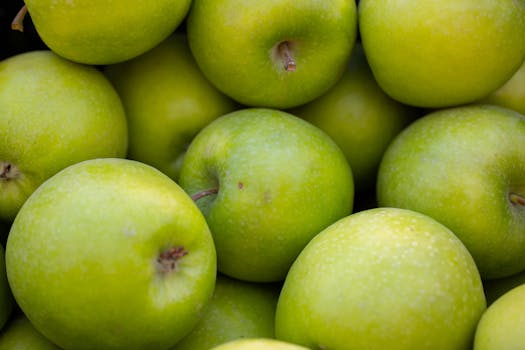Plant-Based Leathers: Mushroom, Pineapple, and Apple Fibers
When you think of leather, you probably imagine a sleek and luxurious material commonly made from cowhide or other animal skins. However, with the increasing demand for more sustainable and ethical alternatives, plant-based leathers have been gaining popularity in recent years. Among the many innovative materials in the market, mushroom, pineapple, and apple fibers have emerged as promising substitutes for traditional leather. Not only are they cruelty-free and environmentally-friendly, but these plant-based leathers also offer a range of unique qualities that make them attractive to both fashion and eco-conscious consumers. In this article, we’ll dive into the world of plant-based leathers and explore the unique properties of mushroom, pineapple, and apple fibers. 
What is Plant-Based Leather?
Plant-based leather, also known as vegan leather, is a type of material made from various plant sources instead of animal hides. It is an alternative to traditional leather that avoids the use of animal products, making it a more ethical and sustainable option for both consumers and the environment. While traditional leather production has been linked to issues such as animal cruelty, deforestation, and water pollution, plant-based leathers offer a more eco-friendly and responsible solution.
The Rise of Mushroom Leather
One of the most popular plant-based leathers on the market is mushroom leather, also known as mycelium leather. This unique material is made from the roots of mushrooms, called mycelium, which are grown in a controlled environment using sustainable methods. The mycelium is then harvested, processed, and compressed to create a durable and flexible leather-like material.
Properties of Mushroom Leather
Mushroom leather has many properties that make it a desirable alternative to traditional leather. For one, it is incredibly lightweight, making it perfect for use in accessories such as bags and shoes. It also has a soft and supple texture, making it more comfortable to wear than some other vegan leathers. Mushroom leather is also highly durable and water-resistant, making it suitable for a variety of uses. Additionally, it is biodegradable, making it a sustainable choice for those looking to reduce their environmental impact.
The Potential of Mushroom Leather
Aside from its practical properties, mushroom leather also offers a range of possibilities for fashion designers and manufacturers. As it is a versatile material, it can be molded into different shapes and dyed in various colors, giving designers more creative freedom. It is also an affordable material, making it accessible to consumers who may have been put off by the high prices of traditional leather products. With the continuous innovation and development in this field, mushroom leather has the potential to revolutionize the fashion industry and pave the way for a more sustainable future.
The Rising Star: Pineapple Leather
Another emerging plant-based leather is pineapple leather, also known as Piñatex. This material is made from discarded pineapple leaves, which are a byproduct of the pineapple farming industry. The fibers from the leaves are extracted, processed, and transformed into a durable and beautiful leather-like material.
Properties of Pineapple Leather
Similar to mushroom leather, pineapple leather is lightweight, soft, and flexible, making it suitable for a variety of applications. It also has a unique textured surface, giving it a sophisticated and elegant look. One of the most significant advantages of pineapple leather is its breathability, making it comfortable to wear in hot weather. Additionally, it is water-resistant and biodegradable, making it a sustainable choice for environmentally-conscious consumers.
A Versatile Material
Pineapple leather has been used by fashion designers for a range of products, from shoes and bags to clothing and accessories. Its natural colors and textures make it an excellent choice for adding a touch of luxury to sustainable fashion items. Additionally, it can be embossed or printed with patterns to create unique designs, making it an attractive option for fashion brands and their consumers.
The Apple Leather Alternative
Apple leather, also known as Appleskin, is another plant-based leather made from a combination of apple waste and polyurethane. The discarded apple cores and peels are collected and transformed into a pulp, which is then mixed with other materials to create a leather-like fabric. This innovative material offers a sustainable and cruelty-free alternative to traditional leather while reducing food waste in the process.
Properties of Apple Leather
Apple leather has a similar appearance and texture to traditional leather, making it an excellent substitute for fashion items such as jackets, belts, and bags. It is also incredibly durable and water-resistant, making it suitable for everyday use. Additionally, it is easy to clean and maintain, making it a practical and low-maintenance choice for consumers.
The Future of Plant-Based Leather
Plant-based leathers, such as mushroom, pineapple, and apple fibers, are paving the way for more sustainable and ethical alternatives in the fashion industry. With the rise of conscious consumerism, more and more people are turning to plant-based leathers as a cruelty-free and environmentally-friendly choice. As technology continues to advance, we can expect to see more innovation and development in the field of plant-based leathers. Who knows, we may even see a day when plant-based leathers become the new norm in the fashion world.
Conclusion
The rise of plant-based leathers has sparked a new era of ethical and sustainable fashion. With its unique properties and potential for innovation, mushroom, pineapple, and apple leathers are slowly but surely making their mark in the industry. Not only do these plant-based leathers offer a more responsible and compassionate option for consumers, but they also present an opportunity for fashion brands to make a positive impact on the environment. The future looks bright for plant-based leathers, and we can’t wait to see where it takes us.











